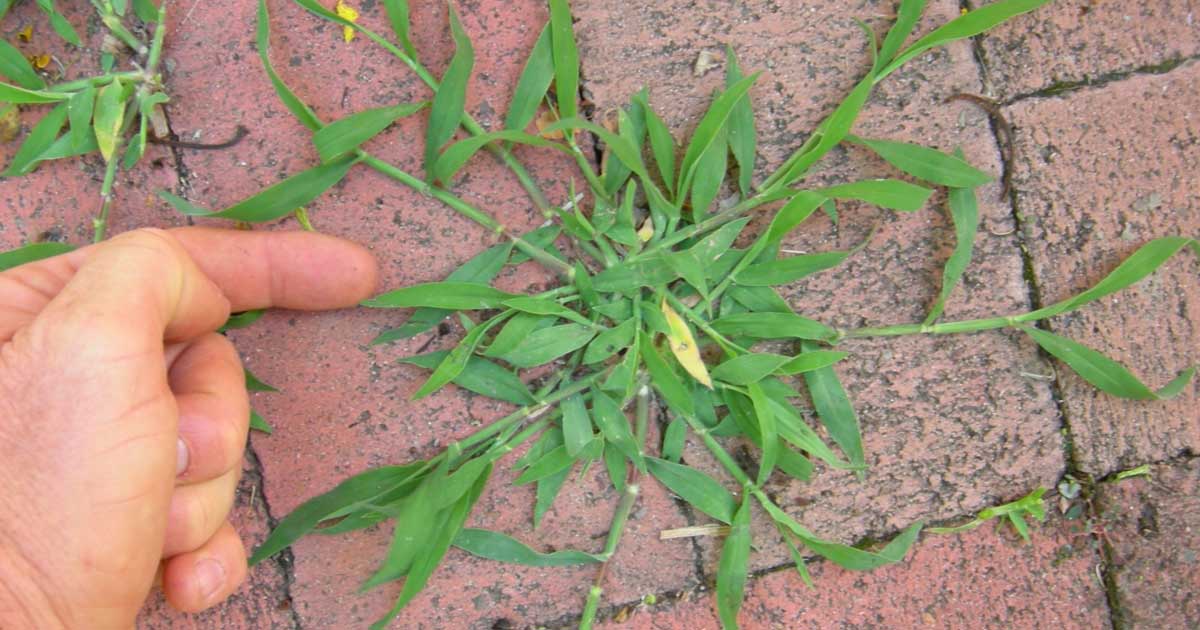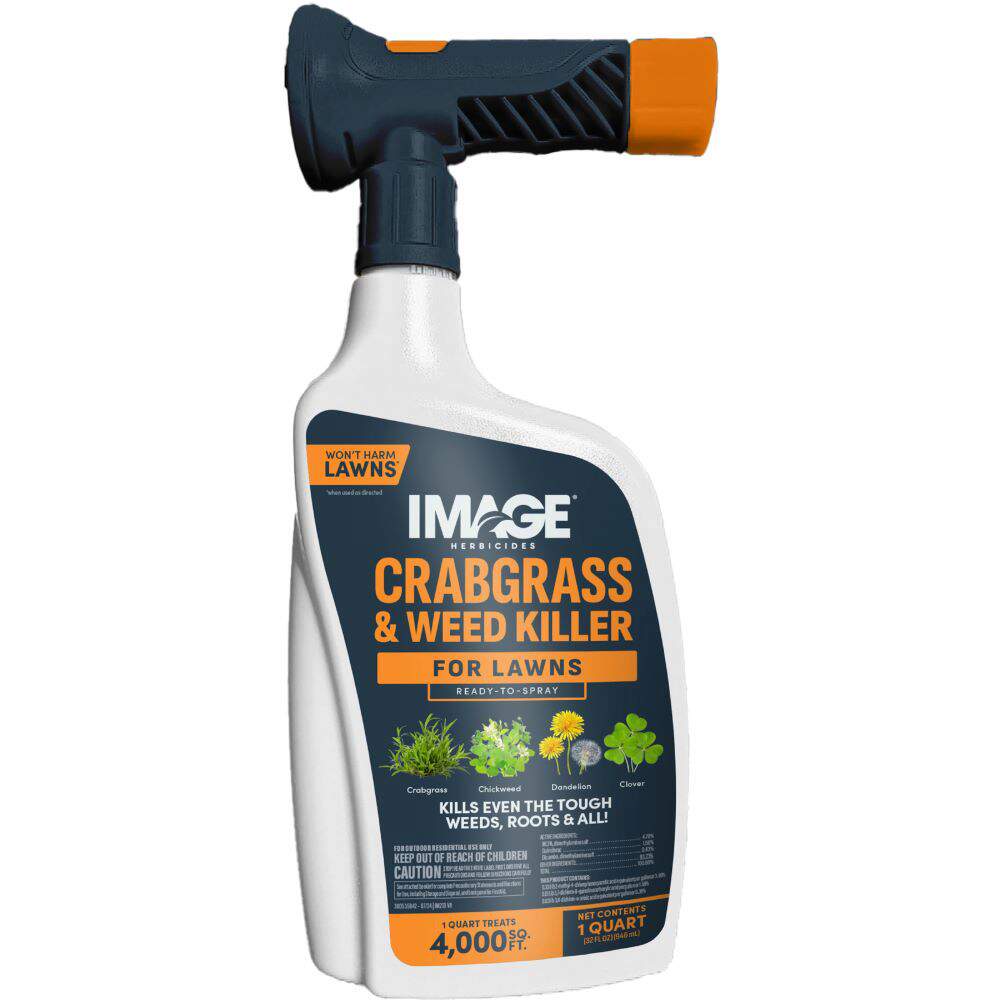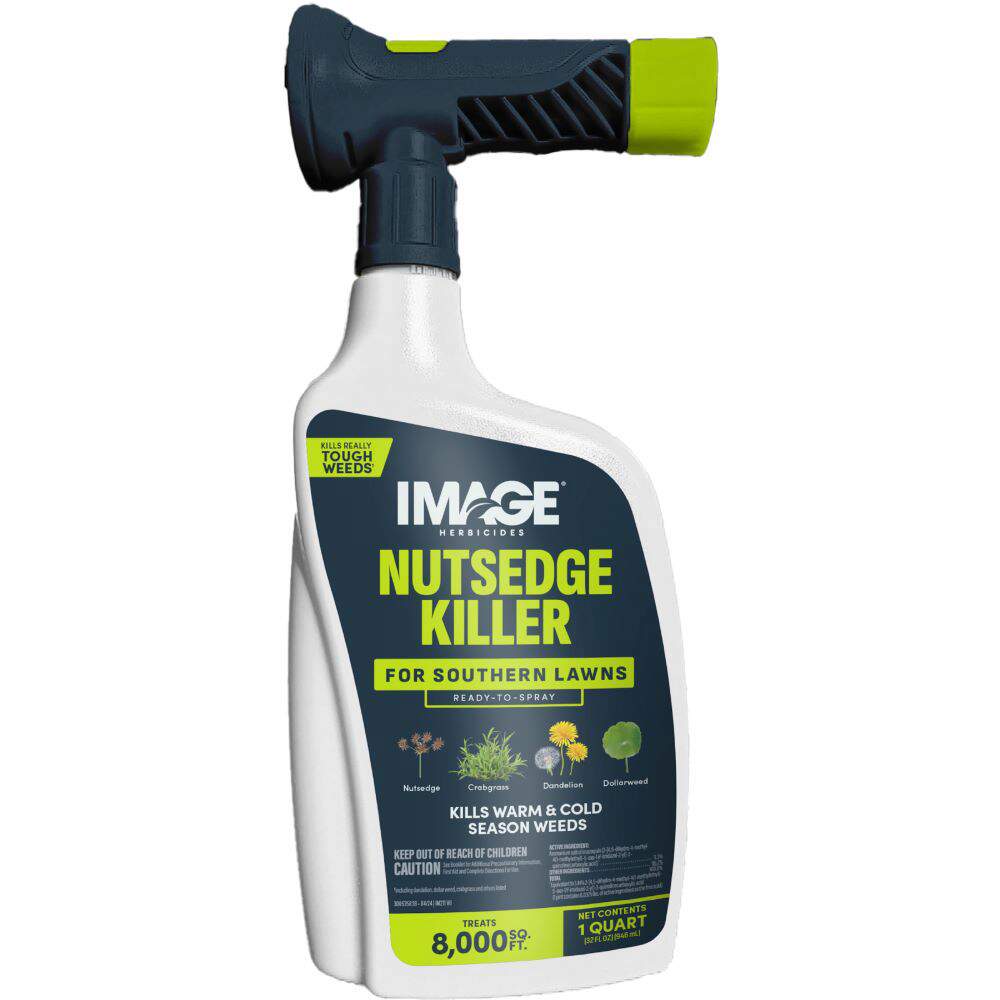HOW TO IDENTIFY CRABGRASS
Crabgrass is a large family of annual, warm-season weeds. Two types of crabgrass cause the most problems for lawn owners: hairy crabgrass (Digitaria sanguinalis) and smooth crabgrass (Digitaria ischaemum). Both these grassy, clump-forming weeds have long, jointed stems that fan out like fingers or the legs of a crab. Both have shallow, fibrous roots.
Hairy crabgrass, also known as large crabgrass or purple crabgrass, has long, ground-hugging stems that root at the nodes as they spread. Hairs cover this weed's leaf sheath and blades on both sides. Smooth crabgrass has non-hairy, branching stems and blades that lie on the ground. Smooth crabgrass doesn't root at the stem nodes.
Before they open, crabgrass leaves are rolled in the bud — not folded like annual bluegrass (Poa annua). Prolific branched seed heads of a single crabgrass plant can produce up to 150,000 seeds in one season. The plants die off with fall's first hard frost, but seeds germinate quickly in spring and start the cycle again.
WHERE AND WHY CRABGRASS GROWS
Crabgrass grows throughout the United States — wherever you find lawns flourishing under full sun. This tenacious weed can set seed when just 1/2 inch tall, far too low for mower blades to prevent seed from maturing. Crabgrass usually outcompetes grasses in dry, drought-prone lawns. It thrives in compacted soil, weak or thinning turf, and bare lawn spots.
Crabgrass seeds need light to germinate. Low lawn mowing heights let more light in, so crabgrass gets a lift when you mow too short. Taller mowing heights keep weed seeds shaded, giving lawn grasses the edge.
HOW TO CONTROL CRABGRASS
When treating crabgrass in your lawn, always check the product label to make sure your lawn grass is listed. Some turf grasses are sensitive to herbicides, so check labels before applying. Only treat well-established lawns. For best results, treat emerged crabgrass when weeds are young and small, before seeds set.
Image Herbicides offer several highly effective liquid products to kill or control crabgrass:
- Image Herbicides Crabgrass & Weed Killer for Lawns, available in Ready-to-Spray and Concentrate formulas, is a selective, post-emergent herbicide that kills crabgrass — roots and all. For best results, apply when soil is moist. Use this product any time during the season, from the time crabgrass emerges until it reaches 3 to 4 inches tall. Always follow label guidelines, including frequency of applications and seasonal maximums for broadcast treatments.
- Image Herbicides Nutsedge Killer for Southern Lawns, available as Ready-to-Spray and Concentrate, is a selective, post-emergent herbicide that kills and controls crabgrass and other tough listed weeds in southern lawns. The ready-to-spray product attaches to a regular garden hose for application. Use the convenient concentrate with a pump-style sprayer.
- Image Herbicides Crabgrass, Nutsedge & Weed Killer for Lawns, available in Ready-to-Spray and Concentrate formulas, can be used on most cool-season and warm-season lawn grasses — but not St. Augustine grass lawns. This selective weed killer starts working on contact to kill crabgrass down to the root.
Crabgrass Control Tip: Crabgrass seed germinates when soil temperatures reach 55 degrees Fahrenheit — the same temperature that triggers forsythia's yellow spring blooms. Crabgrass-preventing granular lawn treatments such as Pennington Full Season Weed & Feed 25-0-8, used in conjunction with post-emergent weed killer, help keep crabgrass at bay.
Always read product labels thoroughly and follow instructions, including guidelines for lawn grass types, frequency of applications and seasonal maximums that may apply.
CRABGRASS GALLERY
Crabgrass Patch

Crabgrass Plant

Smooth Crabgrass

Hairy Crabgrass

Hairy Crabgrass Flower

Smooth Crabgrass Flower

Crabgrass Seeds



